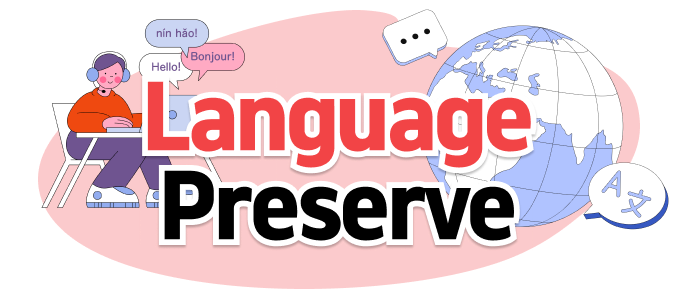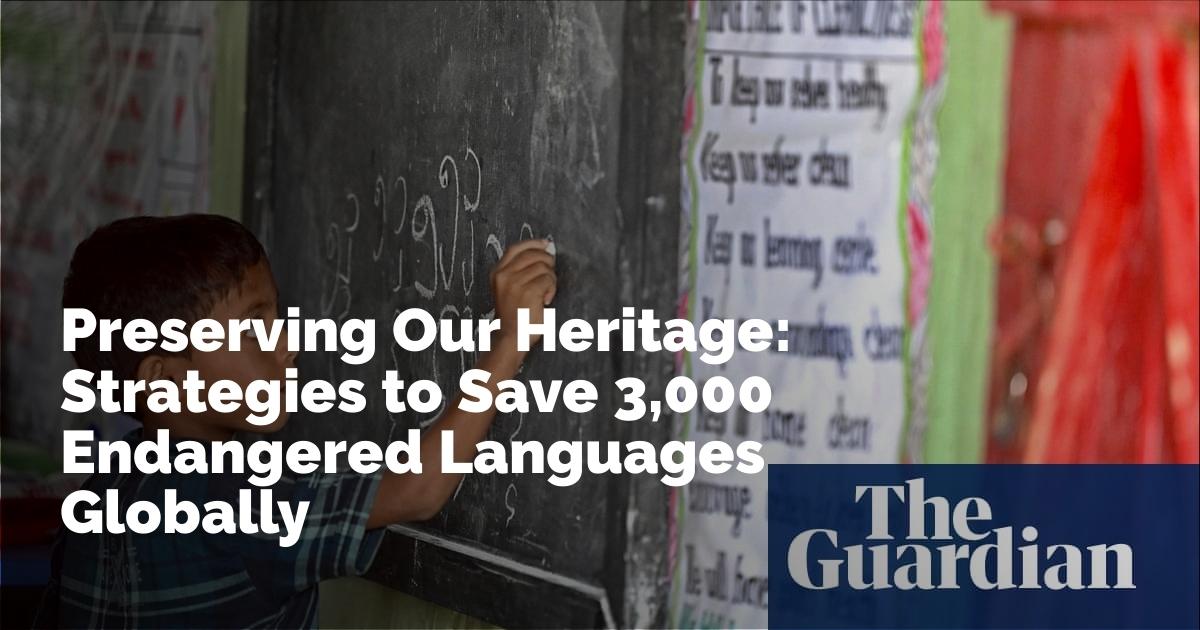The Imperative to Preserve Endangered Languages
In a world with approximately 7,000 languages, the cultural tapestry is rich and diverse. However, as time progresses, the loss of these languages becomes alarmingly prevalent, with predictions indicating that nearly half may vanish within the coming decades. This grim forecast casts a shadow not only over the languages themselves but also the rich histories and cultures they signify. In response, activists worldwide are harnessing the power of online tools to fight this cultural erosion, striving to ensure that endangered languages such as Igbo and Angika are documented and revived for future generations.
Understanding Language Extinction
The disappearance of a language is often accompanied by the loss of a community's cultural heritage and identity. Statistics indicate that whereas just a decade ago one language was lost every three months, by 2019, the rate had escalated to one every 40 days. This translates to an annual loss of approximately nine languages. Unesco holds a cautiously optimistic view that by the end of the century, half of the world’s languages could have disappeared, underscoring an urgent need for protective measures.
The reasons for this decline are multifaceted. Languages face extinction when their usage diminishes in daily life, particularly if they are absent from educational and formal environments. Furthermore, when a language’s final native speakers pass away without having taught it to younger generations, the language may be lost forever.
Cultural Impact Beyond Words
Language is more than just a means of communication; it is a vessel carrying the cultural heritage and historical traditions of its speakers. Tochi Precious, an activist from Nigeria, emphasizes this point, drawing attention to languages like Igbo, which is under threat despite being spoken by a large population. Precious highlights that the death of a language signifies not just the loss of words but the erasure of a people’s history and cultural identity. For communities around the world, the dominant global languages, such as English, can overshadow local dialects, leading to cultural homogenization.
Online Platforms: A Modern Solution
The digital age offers potent tools for language revival. Activists like Tochi Precious have leveraged platforms such as Wikitongues to catalogue languages at risk. Wikitongues supports the preservation of languages by encouraging the creation of media, dictionaries, and Wikipedia entries in various languages, which collectively document and promote linguistic diversity. To date, Wikitongues has helped document about 700 languages through collaborative efforts.
In India, Amrit Sufi uses similar methods to capture the essence of Angika, a language spoken in the eastern state of Bihar. By recording videos of traditional songs and providing translations, Sufi works to protect Angika from being reduced to an unregistered oral history. With around 7 million speakers, Angika suffers from limited visibility in official settings, contributing to its decline. Although traditional cultural practices are waning, Sufi's documentation work makes Angika accessible to wider audiences, fostering greater appreciation and pride in the language.
Challenges of Preservation
Preserving the structure and vocabulary of endangered languages is not in itself sufficient; they need to be actively used by community members. The Rohingya community exemplifies this challenge. Forced into diaspora by conflict, the Rohingya face the risk of losing their predominantly oral language. To counter this, activists have introduced the Hanifi script, enabling the writing of educational materials. In the crowded refugee camps of Bangladesh, over 500 schools now teach the Rohingya language to instill cultural identity among children.
Rohingya Cultural Memory Centre's Sahat Zia Hero stresses the urgent need to teach the language to the younger generation, advocating that a rigorous focus on language education is essential to preserve both the language and its cultural roots. Efforts to popularize the Hanifi script on social media platforms aim to encourage wider use among the Rohingya people, who have traditionally used Roman or Burmese script in digital communication.
A New Dawn for Endangered Languages
Despite these efforts, convincing people to embrace their native tongues remains a significant hurdle. Many families, like those speaking Igbo in Nigeria, succumb to pressures valuing widely spoken languages, believing that proficiency in languages such as English is necessary for social and economic success. This belief discourages the intergenerational transfer of minority languages, compounding the threats they face.
However, these mindsets can and do change, as demonstrated by revival success stories. Tochi Precious takes pride in the resurgence of Igbo, a testament to the dedication of passionate individuals who refuse to let their language fade into obscurity. Through advocacy and education, communities are proving that they can overturn grim forecasts, keeping their languages alive for future generations.
Continual Efforts and Hope for the Future
Though the path to revitalizing endangered languages is fraught with challenges, the resolve of activists and community members offers hope. By leveraging technology and fostering a communal appreciation for linguistic heritage, it is possible to turn the tide and enrich the world's cultural landscape. We owe it to future generations to preserve these languages and the cultural identities they encapsulate, embracing diversity that enriches the global mosaic of understanding, history, and culture.
출처 : Original Source

